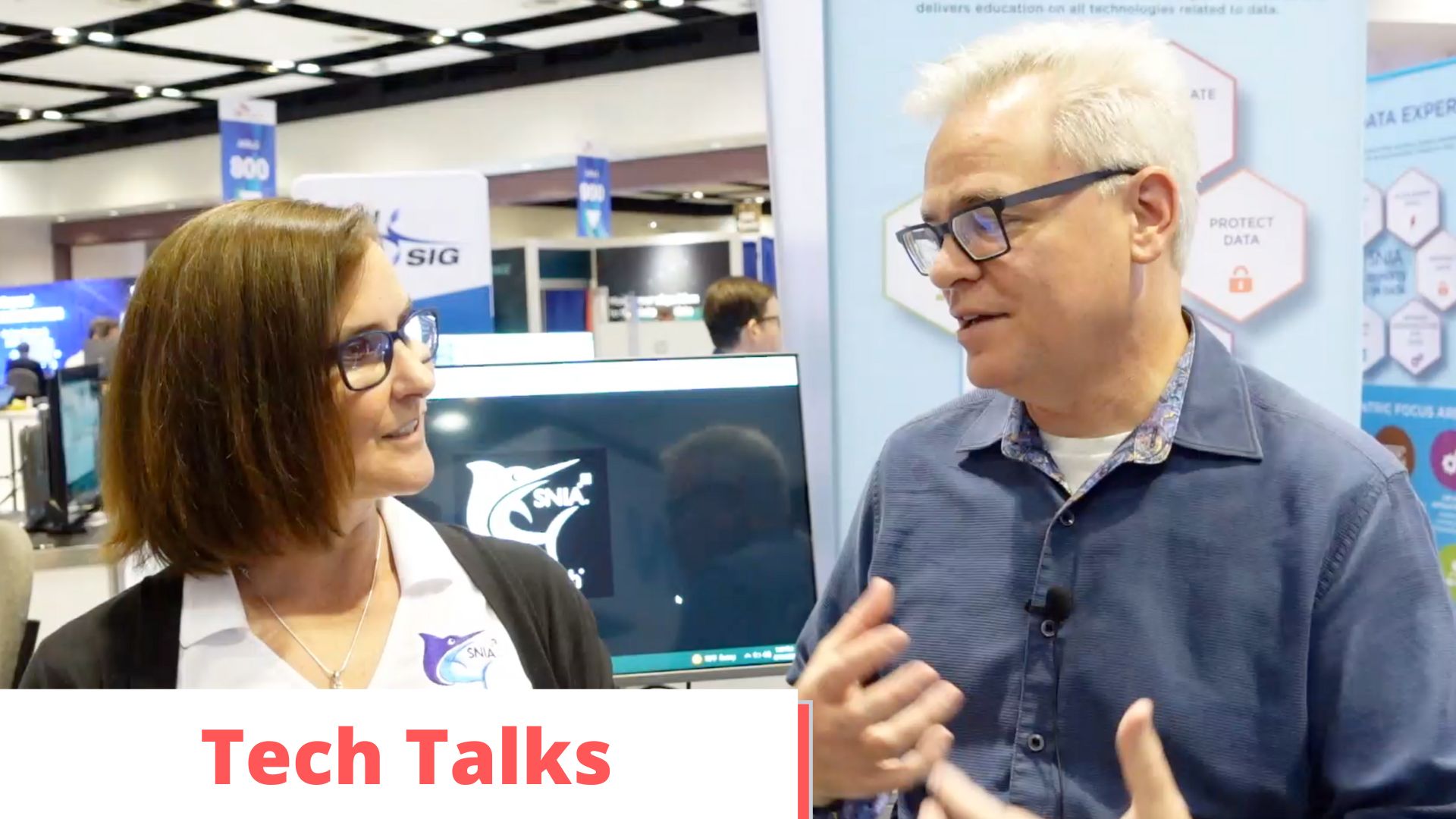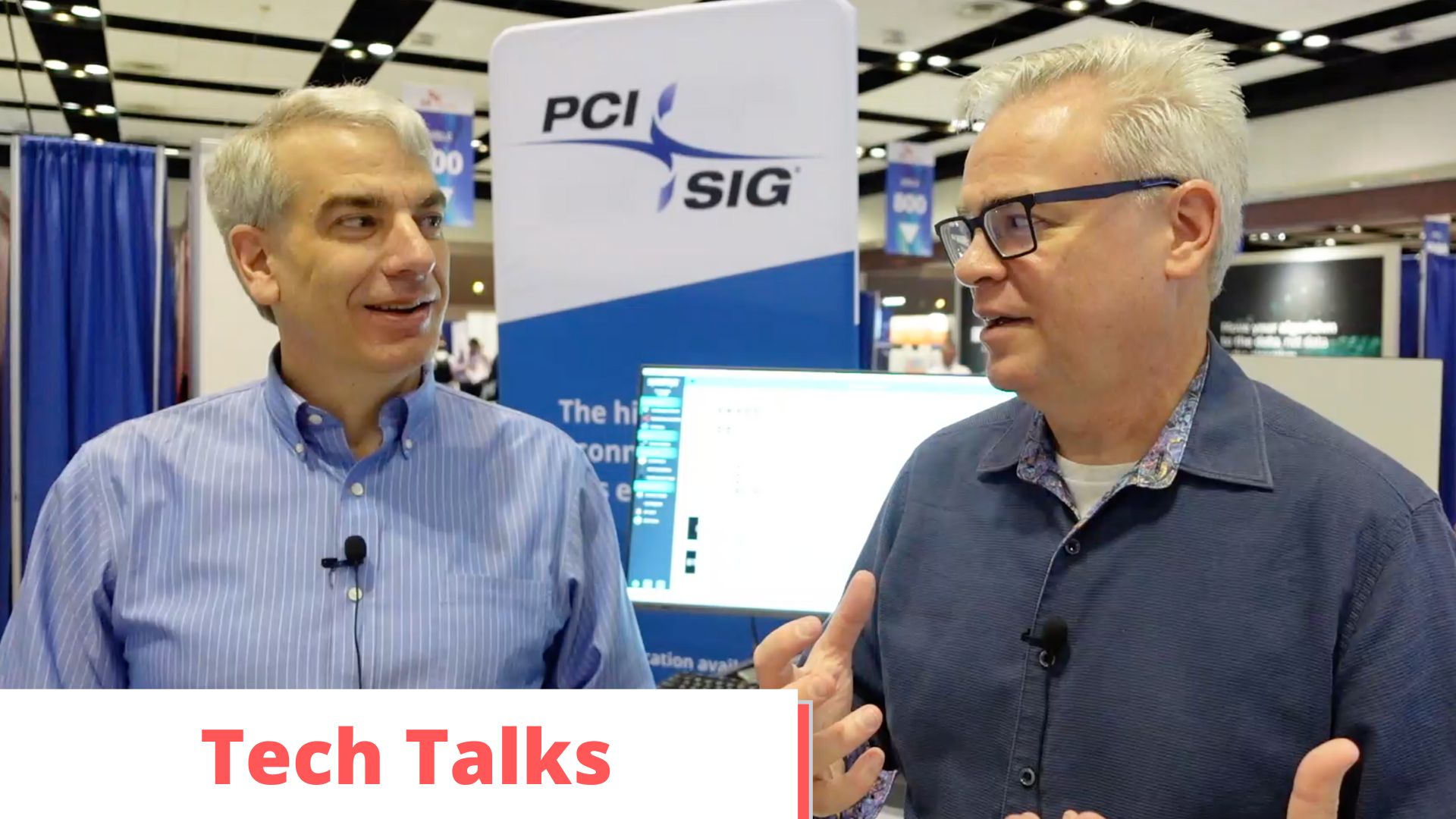Compute Express Link (CXL), a high-speed, low latency interconnect designed to expand memory and heterogeneous compute devices, was top of mind at the Flash Memory Summit (FMS) in Santa Clara this year. In this Gestalt IT Tech Talk, Jim Pappas and Kurtis Bowman discuss the current status of CXL, including the 2.0 devices, the adoption of the 3.0 specification, and the widespread support for CXL in the latest processors from Intel, AMD, and ARM. Learn more about CXL and get involved in the CXL Consortium!
Connect with Jim Pappas and Kurtis Bowman
Jim Pappas is Director of Technology Initiatives at Intel as well as the Chairman of the CXL Consortium. You can connect with Jim on LinkedIn and find out more on the CXL Consortium on their website. Watch Jim Pappas on Season 4 of Utilizing Tech focusing on CXL.
Kurtis Bowman is Director of Server System Performance at AMD as well as Marketing Working Group Co-Chair for the CXL Consortium. You can connect with Kurtis on LinkedIn and learn more about the CXL Consortium on their website.
Realizing the Potential of CXL
CXL, a high-speed, low-latency interconnect standard, is designed to facilitate memory expansion and connectivity among heterogeneous compute devices. Since its inception in 2019, CXL has rapidly gained momentum, attracting over 250 members and advancing the standard through iterations from 1.1 to 3.0. The protocol builds upon Alternate Protocol Mode within the PCI specification to enable memory-like transactions, offering unprecedented capabilities that weren’t feasible before.
One of CXL’s key features is its ability to enable memory transactions rather than just block I/O transactions. This enables load/store instructions across devices, enabling modifications to memory. Furthermore, CXL facilitates memory sharing between devices and the CPU, achieving coherent memory spaces and cache consistency. This architectural resemblance to CPU interconnectivity fosters collaborative, streamlined performance across devices, similar to what we see in dual-processor systems. CXL’s capabilities have led to a rapid expansion of its consortium, boasting an impressive 250+ members who are exploring its potential applications.
The practical implications of CXL are significant, particularly in the realm of memory expansion beyond traditional memory buses. CXL addresses the challenge posed by the growing number of cores in machines outpacing the memory available. By offering a way to attach additional memory outside traditional limits, CXL ensures almost limitless memory expansion potential. This expansion has implications beyond just memory, and CXL’s adaptability is anticipated to redefine composability. In particular, it enables the attachment of memory expansion modules, allowing the pooling and sharing of memory across multiple servers, enhancing efficiency and reducing data movement.
Security and integrity concerns are paramount in any technological advancement. CXL addresses these concerns by aligning closely with the PCI SIG’s security specifications, ensuring end-to-end transaction security. The collaboration between CXL and PCI SIG ensures that industry-best practices for security are implemented within the CXL protocol, addressing potential vulnerabilities.
CXL’s initial implementations primarily focus on memory expansion because this is critically needed today. The CPU industry’s trend of growing core counts has created an urgent need for memory expansion solutions that CXL effectively addresses. However, the future holds the promise of CXL being leveraged for other applications, such as computational storage and heterogeneous compute solutions. While computational storage’s marriage of computation and storage has similarities with the storage industry, CXL enhances accelerators’ efficiency and enables composability, setting it apart from conventional storage solutions.
CXL’s compatibility with major CPU architectures, including Intel, AMD, ARM, and IBM Power, signifies its broad industry support. In practice, CPUs like AMD’s Genoa and Intel’s Sapphire Rapids already embrace CXL, but ARM and IBM Power are also deeply integrated into the CXL ecosystem. The impressive diversity of industry giants adopting CXL underscores its potential to reshape the IT landscape.
It is evident that CXL is propelling the IT industry toward new horizons. With its ability to redefine memory expansion, composability, and acceleration, CXL represents a significant leap in IT capabilities. Industry players can access resources and become part of the CXL ecosystem through the consortium website. We also encourage listening to Season 4 of the Utilizing Tech podcast which focused on CXL. Whether it’s facilitating memory expansion, enhancing security, or reimagining data center architecture, CXL’s journey promises exciting innovations on the horizon.






